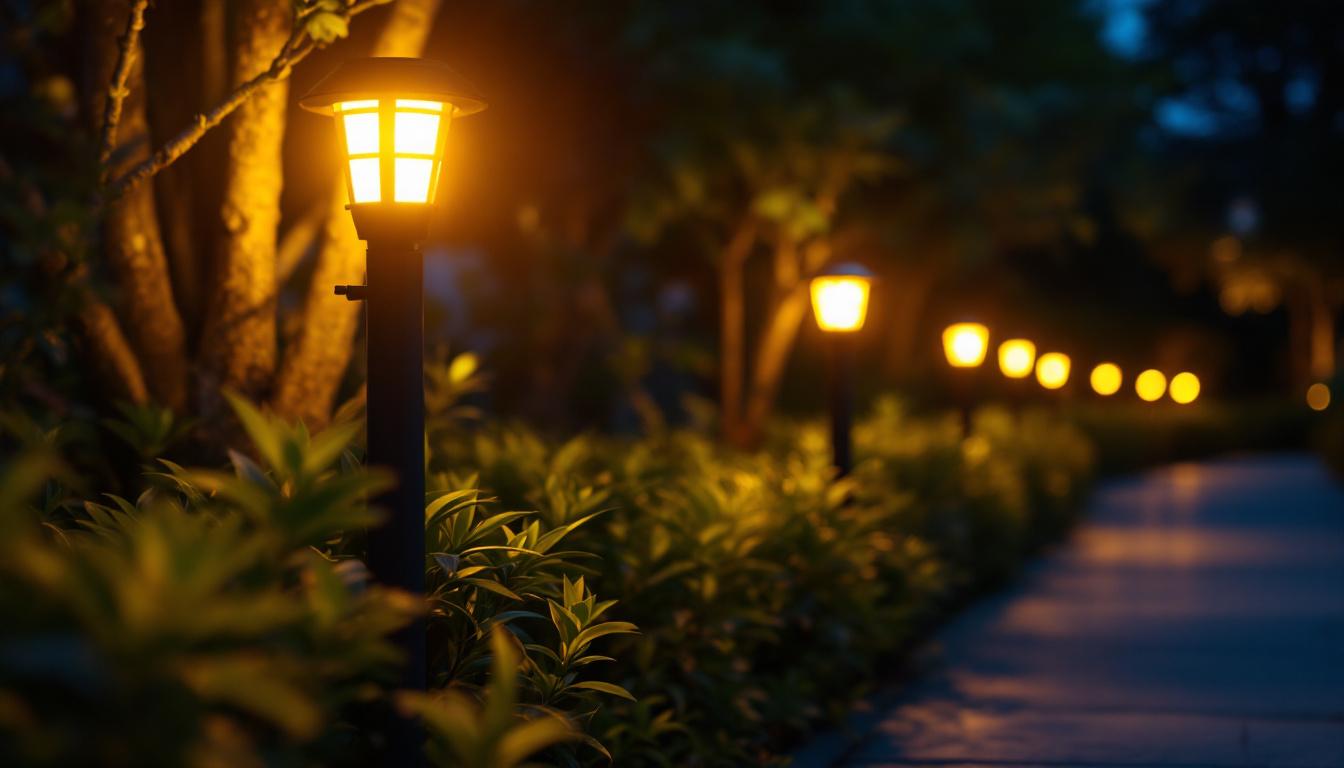
The lighting industry has undergone a significant transformation over the years, driven by technological advancements and the growing demand for energy efficiency. Among the most revolutionary developments in this field is the advent of LED lighting. This article explores the evolution of LED lights, their impact on the industry, and the benefits they bring to both consumers and contractors alike.
Light Emitting Diodes (LEDs) were first developed as a technology in the mid-20th century. Initially, their applications were limited, primarily serving as indicator lights in electronic devices. However, the potential of LEDs was recognized early on, leading to ongoing research and development aimed at enhancing their brightness and efficiency.
As the technology matured, engineers began to explore the possibilities of using LEDs for general illumination. This marked a pivotal moment in the lighting industry, as the quest for more energy-efficient and longer-lasting lighting solutions gained momentum. The shift towards LED technology was not just a technological advancement but also a response to growing environmental concerns, as traditional lighting methods were often energy-intensive and contributed significantly to carbon emissions.
In the early stages, LED technology found its niche in specialty applications. Traffic lights, for instance, began to adopt LED technology due to its long lifespan and lower power consumption compared to traditional incandescent bulbs. This shift not only reduced maintenance costs but also improved visibility and safety on the roads. The bright, vibrant colors of LEDs also enhanced the visibility of signals, making it easier for drivers to react promptly, thereby contributing to a decrease in traffic accidents.
As the advantages of LEDs became evident, their use expanded into other areas, including automotive lighting and decorative applications. The versatility of LEDs paved the way for broader acceptance in the lighting market. In the automotive sector, manufacturers began to integrate LED technology into headlights and taillights, providing drivers with enhanced illumination and visibility during nighttime driving. Furthermore, the advent of LED strip lights revolutionized interior and exterior design, allowing for creative lighting solutions in homes, businesses, and public spaces. This flexibility not only transformed aesthetic possibilities but also encouraged energy conservation, as LEDs consume significantly less power than their incandescent counterparts while offering a longer lifespan.
One of the most significant drivers behind the evolution of LED lighting has been the global push for energy efficiency. Traditional incandescent bulbs consume a considerable amount of energy and have a relatively short lifespan. In contrast, LEDs offer a remarkable reduction in energy consumption, making them an attractive option for both residential and commercial applications.
As energy costs continue to rise, consumers and businesses alike are seeking ways to reduce their energy bills. LED lights not only provide substantial savings but also contribute to a more sustainable future by lowering carbon footprints. Moreover, the longevity of LED bulbs—often lasting up to 25,000 hours—means fewer replacements and less waste, which is a critical consideration in today’s environmentally conscious society.
Governments around the world have recognized the importance of energy-efficient lighting solutions and have implemented various initiatives and regulations to promote their adoption. Incentives such as rebates and tax credits for LED installations have encouraged consumers to make the switch. These financial incentives have not only made LED lighting more accessible but have also fostered a growing awareness of energy conservation among the general public.
Additionally, regulations aimed at phasing out incandescent bulbs have further accelerated the transition to LED technology. These measures have created a favorable environment for lighting contractors to promote and install LED solutions, leading to increased demand in the market. In many regions, educational campaigns have been launched to inform consumers about the benefits of LED lighting, highlighting not just the cost savings but also the enhanced quality of light and the variety of options available, from warm to cool tones. This comprehensive approach has helped to shift public perception, making energy-efficient lighting a standard rather than an exception in modern design and architecture.
As the demand for LED lighting has surged, so too has the technology behind it. Innovations in LED design and manufacturing processes have led to significant improvements in performance, color rendering, and overall efficiency.
Modern LEDs are now capable of producing a wide range of colors and brightness levels, making them suitable for various applications, from residential lighting to commercial and industrial settings. This versatility allows lighting contractors to offer tailored solutions that meet the specific needs of their clients.
The integration of smart technology into LED lighting has revolutionized how consumers interact with their lighting systems. Smart LEDs can be controlled remotely via smartphones or other devices, allowing users to adjust brightness, color, and even set schedules for their lights.
This level of control not only enhances convenience but also contributes to energy savings. By allowing users to turn off lights when not in use or adjust settings based on natural light levels, smart LEDs can significantly reduce energy consumption.
Furthermore, the advent of smart LED technology has paved the way for advanced features such as voice control and integration with home automation systems. Users can now command their lighting through voice-activated assistants like Amazon Alexa or Google Assistant, making it easier than ever to create the perfect ambiance for any occasion. Additionally, many smart LED systems can be programmed to sync with music or movies, enhancing the overall experience by providing dynamic lighting effects that respond to audio cues.
Moreover, the data collected by smart LED systems can provide valuable insights into usage patterns, allowing homeowners and businesses to optimize their lighting strategies further. For instance, analytics can reveal which areas of a home or office are used most frequently, enabling users to focus their lighting efforts where they are needed most. This data-driven approach not only maximizes comfort but also supports sustainability initiatives by minimizing unnecessary energy expenditure.
For lighting contractors, the shift towards LED technology presents numerous advantages. The growing demand for energy-efficient solutions has opened up new business opportunities, allowing contractors to expand their service offerings and reach a broader clientele.
Moreover, the durability and longevity of LED lights mean less frequent replacements, which translates to lower maintenance costs for clients. This aspect is particularly appealing to commercial clients who seek to minimize operational expenses.
By offering LED lighting solutions, contractors can enhance customer satisfaction through improved lighting quality and energy savings. Clients appreciate the benefits of reduced energy bills and the long lifespan of LED fixtures, which can lead to positive word-of-mouth referrals and repeat business.
Furthermore, the ability to provide customized lighting solutions tailored to specific needs allows contractors to differentiate themselves in a competitive market. This adaptability is essential for building strong relationships with clients and ensuring their long-term loyalty.
Despite the many advantages of LED technology, the lighting industry faces several challenges that contractors must navigate. One of the primary concerns is the initial cost of LED installations, which can be higher than traditional lighting options. However, it is essential to communicate the long-term savings and benefits to clients to justify this initial investment.
Additionally, the rapid pace of technological advancements in LED lighting can create confusion among consumers. Contractors must stay informed about the latest developments and be prepared to educate clients on the best options available to them.
As the market for LED lighting continues to grow, ensuring quality and adherence to industry standards becomes increasingly important. Contractors need to be vigilant in selecting products from reputable manufacturers to avoid subpar performance and potential safety issues.
By prioritizing quality, contractors can build trust with their clients and establish a reputation for delivering reliable and effective lighting solutions. This commitment to excellence will ultimately contribute to the long-term success of their business.
The future of LED lighting looks promising, with ongoing research and development paving the way for even more innovative solutions. As technology continues to evolve, lighting contractors can expect to see advancements in areas such as energy efficiency, color rendering, and integration with other smart home technologies.
Moreover, as sustainability becomes an increasingly important consideration for consumers, the demand for LED lighting is likely to grow. This trend presents an opportunity for contractors to position themselves as leaders in the market by offering eco-friendly lighting solutions that meet the needs of environmentally conscious clients.
Several emerging trends are shaping the future of LED lighting. One such trend is the development of human-centric lighting, which focuses on creating lighting environments that enhance well-being and productivity. This approach considers factors such as color temperature and intensity, allowing contractors to design spaces that promote comfort and efficiency.
Additionally, the rise of connected lighting systems, which integrate with smart home devices and IoT technology, is set to transform how consumers interact with their lighting. Contractors who embrace these trends will be well-positioned to meet the evolving demands of their clients.
The evolution of LED lighting has significantly impacted the lighting industry, offering numerous benefits for both consumers and contractors. As technology continues to advance, the opportunities for growth and innovation within the LED market are vast.
Lighting contractors who stay informed about the latest developments and embrace the advantages of LED technology will not only enhance their service offerings but also contribute to a more sustainable future. By understanding the challenges and opportunities presented by LED lighting, contractors can position themselves for success in an ever-evolving industry.
As the lighting industry continues to shine with the advancements of LED technology, LumenWholesale is here to light the way for contractors seeking the finest in spec-grade lighting products. Our commitment to quality, affordability, and convenience ensures that you have access to an extensive selection of LED solutions that meet the highest industry standards. Say goodbye to inflated markups and hello to unbeatable wholesale prices, complemented by the ease of bulk buying with free shipping. Don’t let hidden fees dim your project’s potential. Choose LumenWholesale for premium lighting at the best value, and make every installation a beacon of innovation and sustainability. Discover our range and take the next step in lighting evolution at Wholesale Lighting at the Best Value.

Discover how flood solar lights can maximize efficiency with expert tips. Learn key benefits, optimization strategies, and boost your outdoor lighting today!.

Discover expert tips on yard string training to enhance your team’s lighting skills.

Discover budget-friendly lighting solutions with expert tips tailored for contractors.

Discover effective strategies for lighting contractors to source and install used hand dryers in commercial settings.